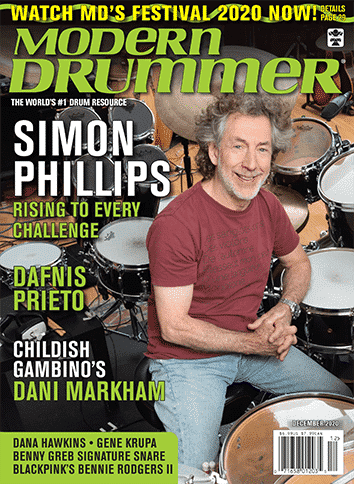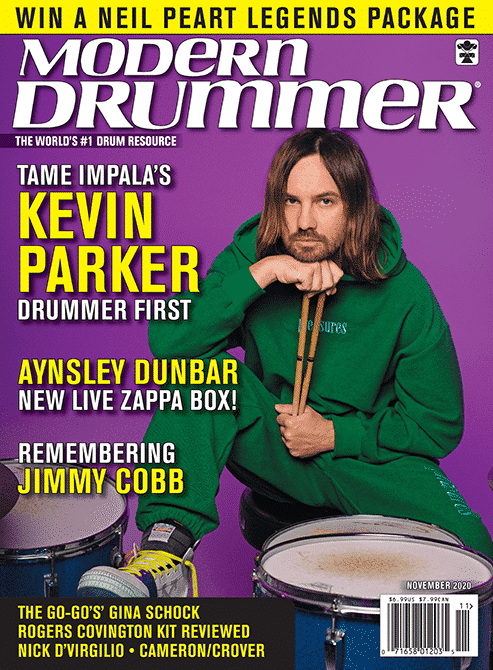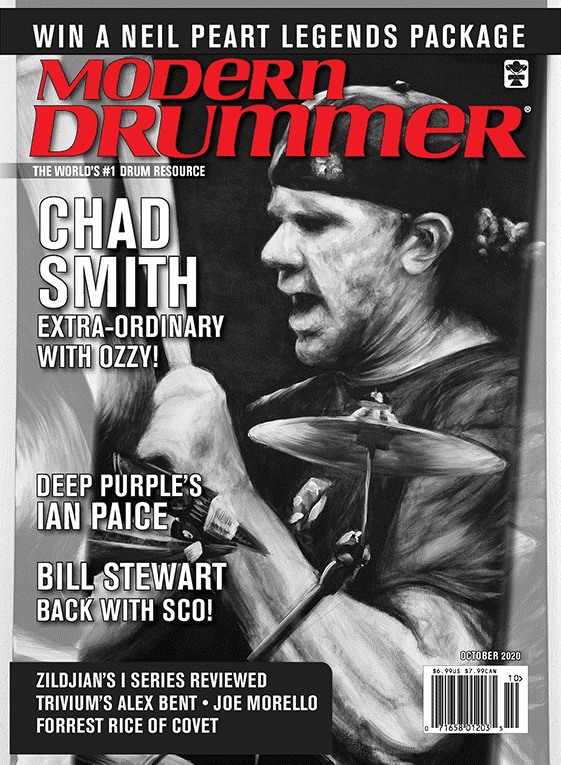Bill Bachman: Top 10 Rudiments Part 4: Paradiddle

The paradiddle is one of the most frequently used rudiments, yet many players haven’t tapped into its natural ability to develop accent and tap control. If you play paradiddles without a clear accent on the first beat, the rudiment can sound monotonous. But building your paradiddle chops using clear accents—made possible through downstroke/upstroke control—will allow you to play paradiddles and other compound stickings with more dynamic expression.
To begin, let’s look at the downstroke and upstroke techniques that are needed to play accented paradiddles. The downstroke starts high (roughly 90 degrees) but stops low after the stroke (around 1″ from the head). The upstroke starts low and is lifted back to the “up” position after striking the drum. The key to proper downstrokes is to hit the drum in the same way you would with a free stroke—but immediately after the stick strikes the head, squeeze the stick into the palm in order to stop the stick pointing down with the stick tip close to the drum.
Assuming you’ve developed the finger control necessary to play diddles (alley-oop or drop-catch at low stick heigh), the biggest challenge with executing paradiddles is having to play a downstroke followed by a light diddle at a lower stick height. Playing on top of the sticks at a slightly higher angle relative to the drum will slightly reduce the accent’s rebound, which offers more leverage to stop the stick. (Remember that downstrokes point down.) Also, having the thumb on the topside of the stick, with no gap between the thumb and first finger, will make it much easier to squelch the stick’s rebound. Other than the downstroke accent, every other note in a paradiddle should be played with a loose grip where the sticks resonate freely and feel heavy in the hands. Advertisement
At fast tempos, you’ll want to employ the Moeller whip downstroke technique, which is is a modified downstroke where the stroke is played from the forearm with a whipping motion rather than from the wrist. (The wrist stays completely relaxed.) The Moeller whip downstroke is great for playing any rudiment that contains an accent and tap at faster tempos, since it alleviates the wrist’s need to perform upstrokes. You’ll want to let some of the accent’s energy flow into the following diddle. Closing the fingers around the stick a little bit (without hitting the palm of the hand) will help get the stick back down to the drum so that they can play the diddle. At very fast tempos, the paradiddle will be played almost exclusively with forearms and fingers.
Here are technical guidelines for playing paradiddles at various tempos:
Slow: Stop the stick after the accent by squeezing the back of the stick against the palm. Use mainly wrist strokes for all notes.
Medium: Restrict the accent’s rebound with the fingers, but allow some of the stick’s energy to propel the unaccented notes. Use a combination of wrist and fingers for the inner beats (drop-catch).
Fast: Play accents using a slight Moeller whip stroke. Don’t restrict the rebound after accents. Play unaccented inner beats with the fingers. (At very fast tempos, paradiddles must be executed almost exclusively with the forearms and fingers.)

This article is culled from Bill Bachman’s popular Stick Technique book, which is designed to help players develop hands that are loose, stress free, and ready to play anything that comes to mind. The book is for everyone who plays with sticks, regardless of whether you’re focusing primarily on drumset, orchestral percussion, or the rudimental style of drumming. Divided into three main sections – Technique, Top-Ten Rudiments, and Chops Builders – Stick Technique is designed to get you playing essential techniques correctly and as quickly as possible. Also includes a bonus section two-hand coordination and independence. Advertisement






